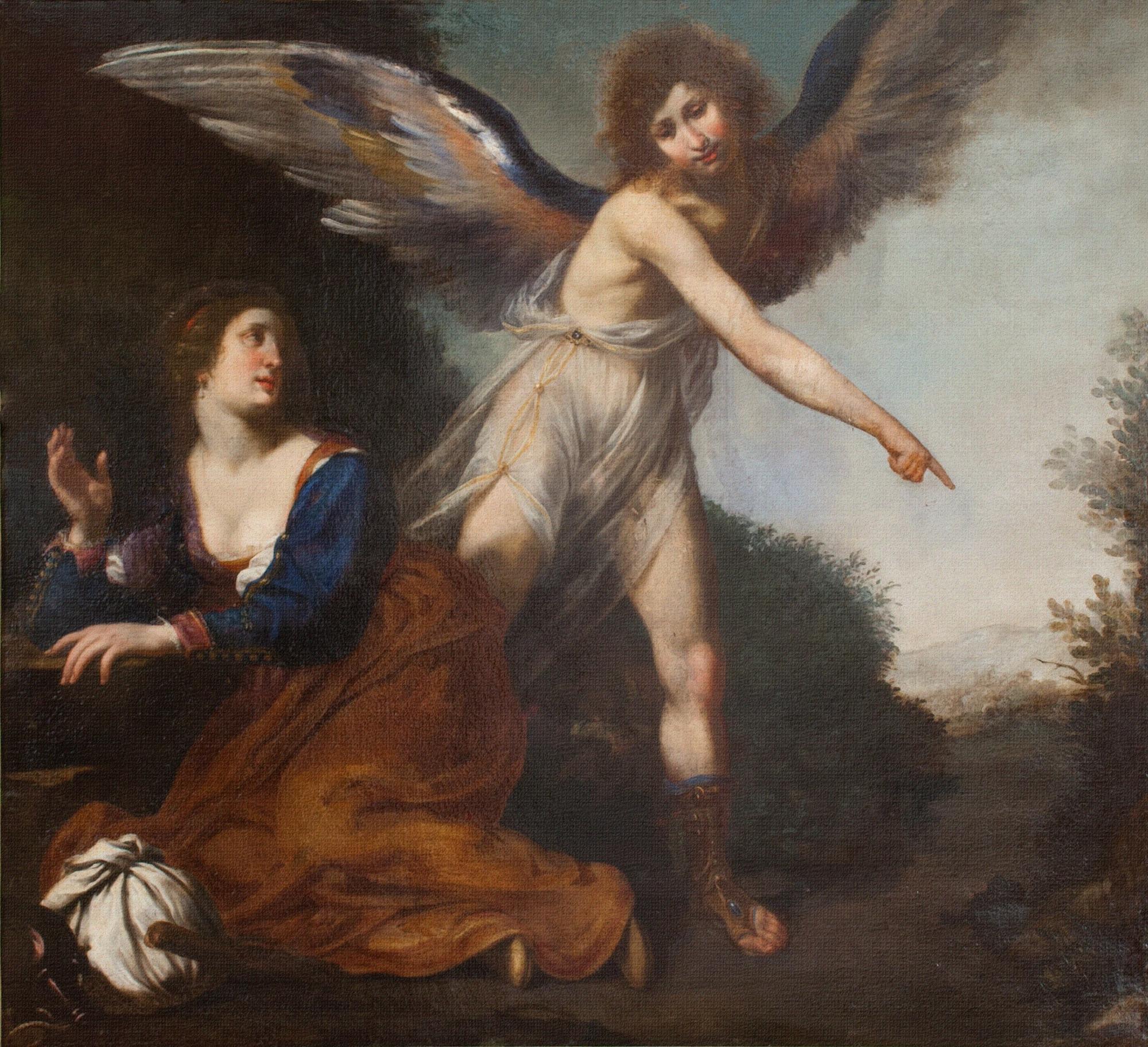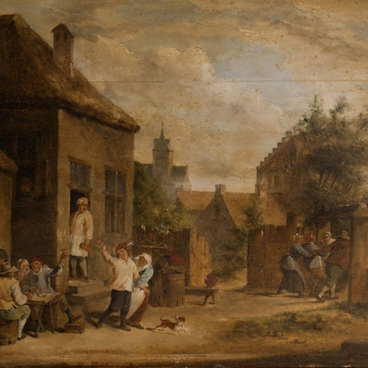Jacopo Vignali, an Italian painter and draftsman of the Baroque school, painted religious, mythological and literary subjects, worked in the mural technique, was an academician of the Florentine Academy of Arts, fulfilled orders from the Medici family. Altar images created by Vignali can be seen in many churches of Tuscany, and the artist’s paintings preserve in collections of the State Hermitage Museum, the State Museum of Fine Arts named after A.S. Pushkin and museums around the world.
The artist took the storyline for his painting “Hagar and the Angel in the Desert” from the Old Testament. The legend tells the story of the mythical ancestor of the Israeli people, Abraham, to whom in a dream the voice of God predicted that the Land of Canaan would become the birthplace of his descendants. However, Abraham did not have children, and his wife Sarah took a handmaid, the Egyptian Hagar, who became Abraham’s concubine. Soon, the oppressed mistress Hagar left Abraham’s house, wandered for a long time, but an angel appeared and ordered her to return. After returning, Hagar bore a son to Abraham and named him Ishmael.




